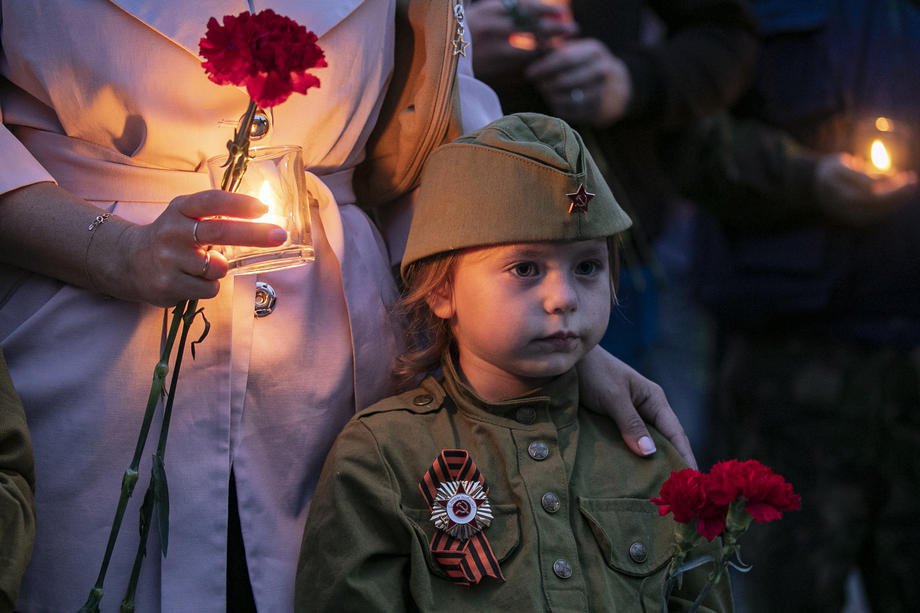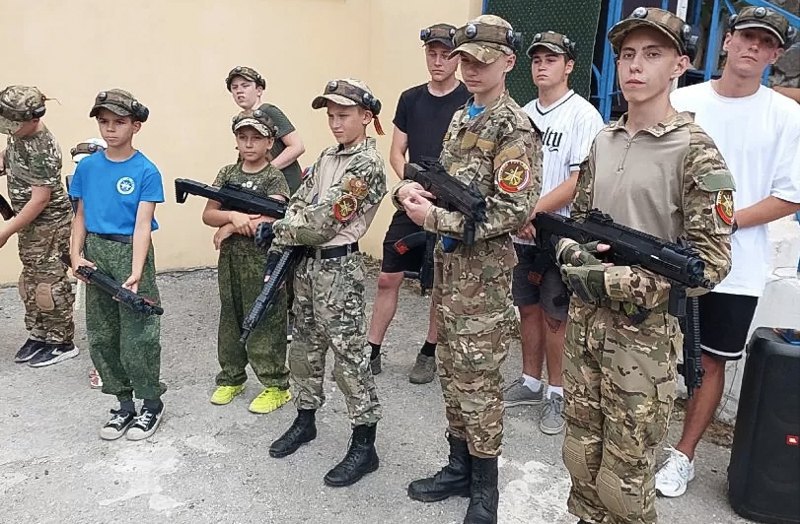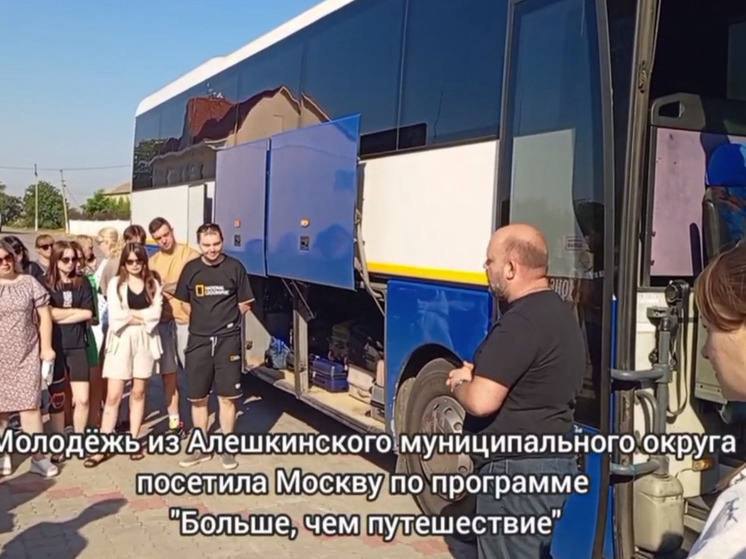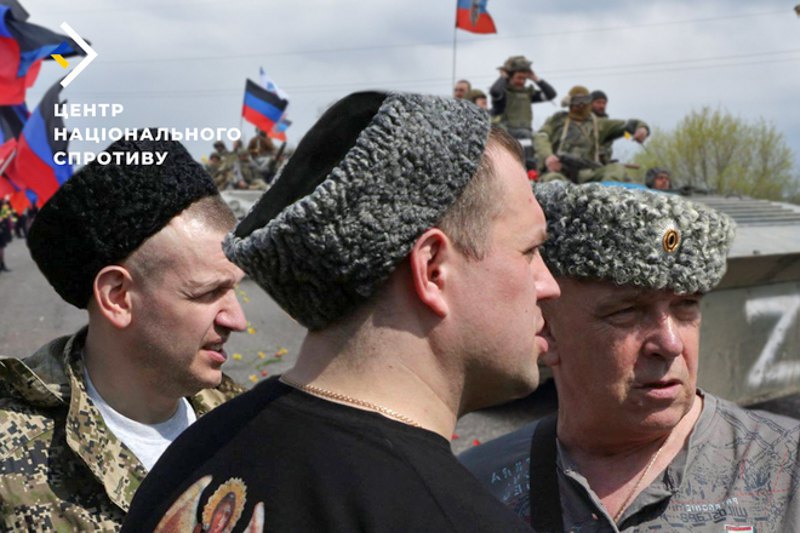
The enemy primarily targets the most vulnerable group – children left without the protection of guardians. For Russians, engaging with children and youth forms part of a broader campaign to assimilate the population of occupied Ukrainian regions. The objective is to militarise these children and prepare them for future service in the Rissian army.
The Russian network of military–patriotic training centres, known as “Warrior” (“Voin”), has assumed patronage over orphans from the occupied Donetsk Region and plans to train them for service in the Russian armed forces. The director of the Donetsk regional branch of “Voin”, Oleksandr Kamyshov, stated that the organisation had “taken under its patronage” children from the Children’s Social Centre and Amvrosiyivka boarding school No. 4. Russians are organising activities that include training in UAV operation, tactical medicine, and basic military skills. The instructors, predictably, are “veterans of the armed conflict”.
In the occupied territories, the Russian occupation authorities are exploiting student labour to maintain the functioning of the occupation administrations and support industrial production. On 16 May, Ukrainian student guerrillas published scans of Russian documents calling on Donetsk National Technical University in occupied Donetsk to encourage students to work for the so-called “Ministry of Internal Affairs of the Donetsk People’s Republic”. Representatives of the “DPR Ministry of Internal Affairs” held an online lecture for the university’s students, during which they urged them to consider employment with the “ministry” as an alternative to being mobilised into the Russian army.

Officials in the occupied Luhansk Region and in Dzhankoy, Crimea, are compelling high school students to work in occupier-controlled agricultural enterprises, warehouses, and other facilities producing goods for the Russian military. Facing a critical shortage of personnel across various sectors in occupied Ukraine, Russian authorities are attempting to compensate by coercing high school and university students into forced labour.
The network of youth military–patriotic organisations continues to expand, working aggressively to re-educate and indoctrinate Ukrainian children through so-called educational trips to Russia. On 15 May, the occupation administration of Kherson Region reported that 90 high school students from the occupied region had travelled to Moscow and Orel on an “educational trip” organised by the Faces of Victory and Path to Victory organisations. These programmes are presented as investments in “developing in schoolchildren a sense of belonging to the historical heritage and respect for the feat of the Soviet people”. During their visit, students toured Soviet war memorials, museums, and monuments.
The Russian Federal Agency for Youth Affairs (Rosmolodezh) carries out both of these initiatives under the “New Horizons” programme, which is part of the broader “More than a Journey” initiative. This programme seeks to showcase the “diversity and achievements of Russian regions” to youth from occupied Ukrainian territories. It is projected that more than 10,000 young people from these areas and Russia’s border regions will participate in various Rosmolodezh events in 2025.

Another method of forced integration is the deployment of a network of paramilitary organisations, primarily Cossack ones, which, according to Russian officials overseeing the occupation, facilitates the military and administrative absorption of the seized territories. In 2023, the occupiers established the South-Western Department of the Federal Agency for Ethnic Affairs. Its mandate is to implement the Kremlin’s national and ethnic policy in the occupied Donetsk, Luhansk, Zaporizhzhya, and Kherson Regions, including cooperation with Cossack societies.
The acting head of this department, Sergey Mildzhikhov, stated in an April 2025 interview that Russia had developed a legal mechanism for the formation of Cossack societies in occupied Ukraine. According to him, 10 such societies have already been registered in Luhansk Region, 8 in Donetsk Region, 8 in Kherson Region, and 3 in Zaporizhzhya Region.
Cossack organisations function in Russia as instruments of state–controlled civil society. Their creation in the occupied regions of Ukraine allows occupation authorities to oversee and manage the development of a substitute “civil society” under Kremlin control. Additionally, these Cossack groups play a significant role in indoctrinating and militarising local residents.
To better understand the military function of these organisations, one can refer to the Russian armed units closely associated with Cossack structures:
- 20th Motorised Infantry Division (Kamyshyn, Volgograd Region)
- 4th Tank Division (Naro-Fominsk, Moscow Region)
- 32nd Separate Motorised Rifle Brigade (Novosibirsk)
- 36th Separate Motorised Rifle Brigade (Borzya, Trans-Baikal Territory)
- 59th Separate Motorised Rifle Brigade (Serheyevka, Primorskyy Territory)
- 205th Separate Motorised Rifle Brigade (Budennovsk, Stavropol Territory)
- 752nd Motorised Rifle Regiment (Valuyki, Belgorod Region)
- 108th Air Assault Regiment of the 7th Air Assault Division (Novorossiysk, Krasnodar Territory)
- 247th Air Assault Regiment of the 7th Air Assault Division (Stavropol, Krasnodar Territory)
- 7th Separate Tank Brigade (Chebarkul, Chelyabinsk Region)
- 511th Anti-Aircraft Missile Regiment (Engels, Saratov Region)

These “Cossack” military units are active along the entire frontline in Ukraine, and they actively recruit residents of the occupied territories into military service. Representatives of Cossack societies promote pro-Russian military and patriotic ideology and conduct military training courses for youth. Russia is investing considerable effort into establishing branches of the All-Russian Cossack Society across the occupied regions. This activity should be viewed as part of a broader strategy to expand the mobilisation base of the Russian Armed Forces.
The activities of the Russian Orthodox Church in the occupied territories are also deeply concerning. Patriarch Kirill Gundyaev of the Russian Orthodox Church appointed Bishop Peter (born Ivan Dmitriev, previously serving in the Chelyabinsk Region of the Russian Federation) as Bishop of Berdyansk and Prymorsk, assigning him oversight of all Russian Orthodox Church parishes in the occupied part of Zaporizhzhya Region. The parishes in Melitopol and Enerhodar have been placed under Bishop Peter’s direct control. His appointment, given his administrative background, underscores the occupiers’ intent to use ROC clergy as instruments to impose a system of control over the social, cultural, and spiritual life of the local population.
The combination of these measures reveals a systematic campaign to expose Ukrainian children to Russian pseudo-historical narratives while simultaneously erasing Ukrainian national identity and historical memory. These practices should be understood as a form of deportation. Russian authorities are physically removing Ukrainian children from their communities and transferring them to Russia, where they are subjected to programmes designed to dismantle their national identity. The Russian government continues to fund and coordinate these efforts through its Federal Agency for Youth Affairs (Rosmolodezh), maintaining its belief that the indoctrination of Ukrainian children remains a central policy of the Russian state.








